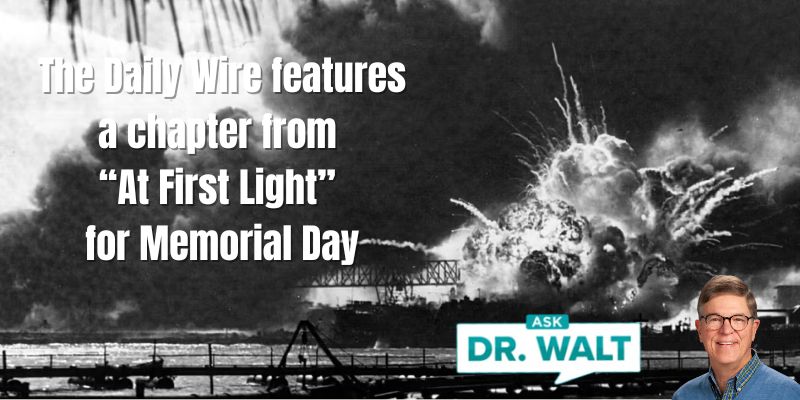
May 23, 1944 — At daybreak the breakout began and it meant kill or be killed at Anzio
May 23, 2024
Day 8 — Our Scotland and Ireland Adventure
May 23, 2024May 23, 1944 — The first day of the Anzio breakout saw the 3rd Division suffering nearly 1000 casualties – the heaviest on our side
At 0545 on 23 May, a tremendous Allied artillery barrage was directed against the enemy defenses along the Cisterna front. Forty-five minutes later, American tanks and infantry emerged from the smoke all along the front from Carano to the Mussolini Canal to launch the assault. At first, the enemy resistance was stiff, and German mine fields took a heavy toll of American tanks and tank destroyers.[1]

But before noon, the 1st Special Service Force had cut Highway No. 7 below Cisterna, and all units had reached their initial objectives.
Bad weather curtailed the planned air support, but before the day was over 722 missions had been flown; Cisterna and more distant objectives were heavily bombed. By evening, the 1st Armored Division had crossed the Cisterna-Campoleone railroad and had smashed the enemy main line of resistance.
The enemy estimated that, by the end of the first day’s attack, their 362d Infantry Division had lost 50 percent of its fighting power, and two regiments of their 715th Infantry Division had been badly mauled.
The Hermann Goering Panzer Division was rushed southward from Leghorn; and Fourteenth Army planned to detach combat units from I Parachute Corps, holding the Moletta River-Albano road sector, to bolster the shattered forces of LXXVI Panzer Corps on the Cisterna front.
This step was frustrated by the holding attacks of the British 1st and 5th Divisions and the attack on the left flank by the US 45th Division.
German General Mackensen realized his precarious position, but his request to withdraw his left flank to the base of the Lepini Mountains was refused.[1]
~~~~~
At daybreak on 23 May (0538) the front of the 45th and 34th Divisions remained quiet. A light drizzle began, and the enemy relaxed after another vigilant night. Posting their sentries, the Germans huddled in dugouts for a morning nap. At 0545 our artillery began what appeared at first to be another of its irritating, but usual shoots.
This time, however, both duration and intensity were far beyond previous experience. At 0625 light bombers bombed in the vicinity of Cisterna, while three groups of fighter-bombers strafed the wadi area south of the town. Five minutes later the artillery stopped. Immediately thereafter our tanks loomed up in the smoke all along the front, and behind them came swarms of infantry. [3]
Complete surprise had been achieved.
Men of the 180th Infantry had to pry their opponents, often partially clothed, out of the dugouts; below Cisterna the enemy at first thought we were launching another small daytime sortie.
Our artillery preparation, the most intensive thus far at the beachhead, had searched out the command posts, assembly areas, and dumps which we had carefully located in the previous weeks, with the result that enemy communications and supply lines were severely damaged. Enemy artillery fire was slow to start and was hampered by a day-long haze limiting German observation from the dominating hill masses. Though the enemy recovered quickly and put up a strong fight, he never could make up for the initial disorganization, and counterattacks remained local in character.
Opposition in front of the 3rd Division under Maj. Gen. John W. O’Daniel, attacking between the 1st Armored Division and the 1st Special Service Force, was the most stubborn met by any of our troops on the 23rd.
All three regiments attacked with two battalions abreast … the 30th Infantry under Col. Lionel C. McGarr on the north, with the Ponte Rotto and Isola Bella roads as the axes of advance. Backed by the 751st Tank Battalion and the 601st Tank Destroyer Battalion, the infantry drove forward about half the distance to Cisterna.
The first day of the Anzio attack had been extremely successful.
Units everywhere had gained their first objectives, though on the extreme right flank our troops had not been able to hold all their gains.
Extraordinarily large numbers of the German 362d Grenadier Division were willing to surrender when encircled or seriously threatened. Our total of prisoners for the day ran to almost 1,500, half of them taken in the aggressive drive by the 3rd Division.
This unit had the heaviest casualties on our side with a total of 950 killed, wounded, and missing. (American casualties for the entire Army on 23 May were 334 killed, 1513 wounded, and 81 missing, a total of 1928 and the high point of the Italian campaign.
[1] American Forces in Action. Anzio Beachhead (22 January-25 May 1944). The Breakthrough. http://www.ibiblio.org/hyperwar/USA/USA-A-Anzio/USA-A-Anzio-6.html
[2] Starr, 233, 235
In case you haven’t read or listened to Dad’s book, you can learn more or order it here.
© Copyright WLL, INC. 2024.




